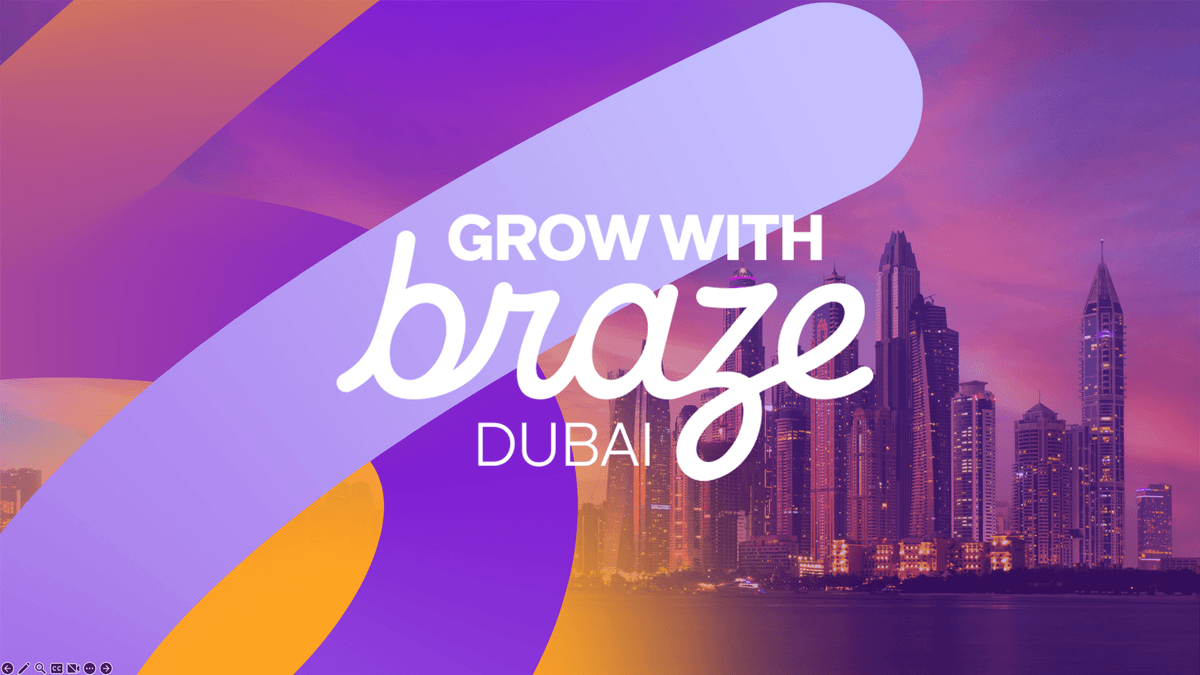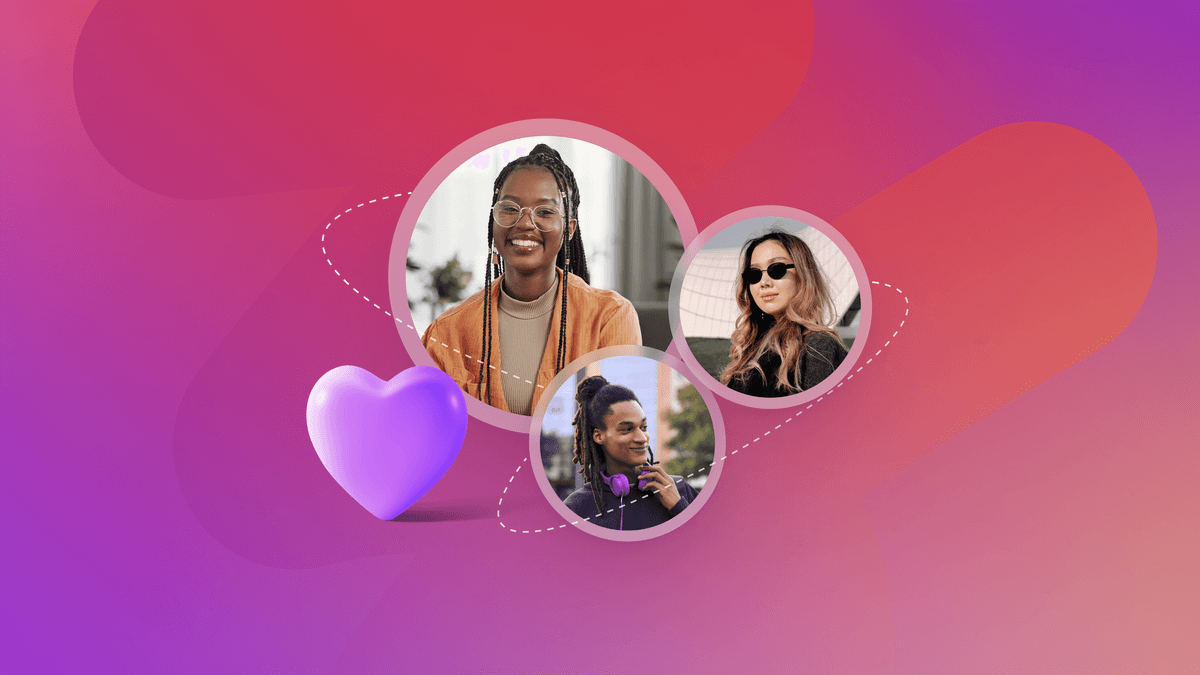6 Stats to Take Your App Engagement to the Next Level
Published on July 20, 2016/Last edited on July 20, 2016/5 min read


Team Braze
When it comes to optimizing your app engagement strategy, the details can make a huge difference. The key to big results is to understand app engagement’s biggest challenge—that consumers are spoiled for choice in ways to spend their time, and at the same time, they stick to their habits. Even though iPhone users, for instance, have an average of 119 apps installed on their phones, the average user will spend 70% of their app-using time in just three apps. And if you graph industry-wide engagement stats, you’ll see that at day 90, retention hovers at just 4%.
So how do you outsmart these industry pain points to keep your users interested and engaged? Says Appboy CRO Myles Kleeger, “Marketers have access to more data than they’ve ever had before and all sorts of new opportunities to effectively apply it.” Let’s unpack what that means and take a look at how this data can be used.
Stat one
55% of individuals who engage with an app in the first week after download will be retained.
After a user downloads your app, week one represents a getting-acquainted period—a “make or break” moment in your user experience. The marketing tactics that you use in week one will create a ripple effect in your marketing down the line. It pays to make sure that your customers have a great experience.
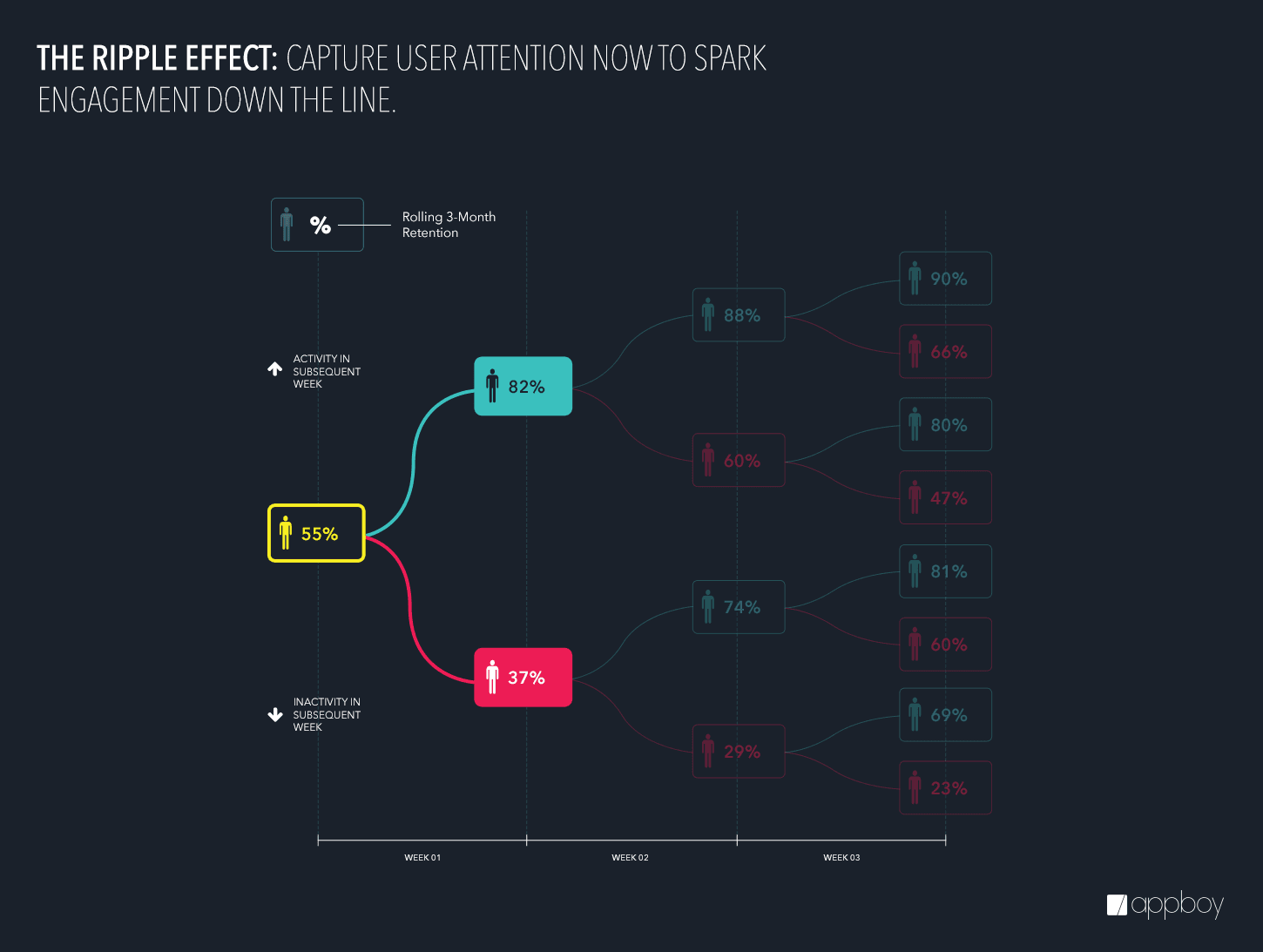
Takeaway
Study early engagement patterns to identify who’s sticking around and why. For example, are your retained users the ones who found a specific feature in your app? If so, consider looking into ways to nudge new users toward that feature, perhaps an in-app message that deep links to it as part of your onboarding campaign.
Stat two
Nearly all people, 90%, who engage with an app on a weekly basis for the first month after installing it, stick with it.
Not surprisingly, the engagement-to-retention correlation we saw for the first week after download holds true through the first month after download. With even higher returns.
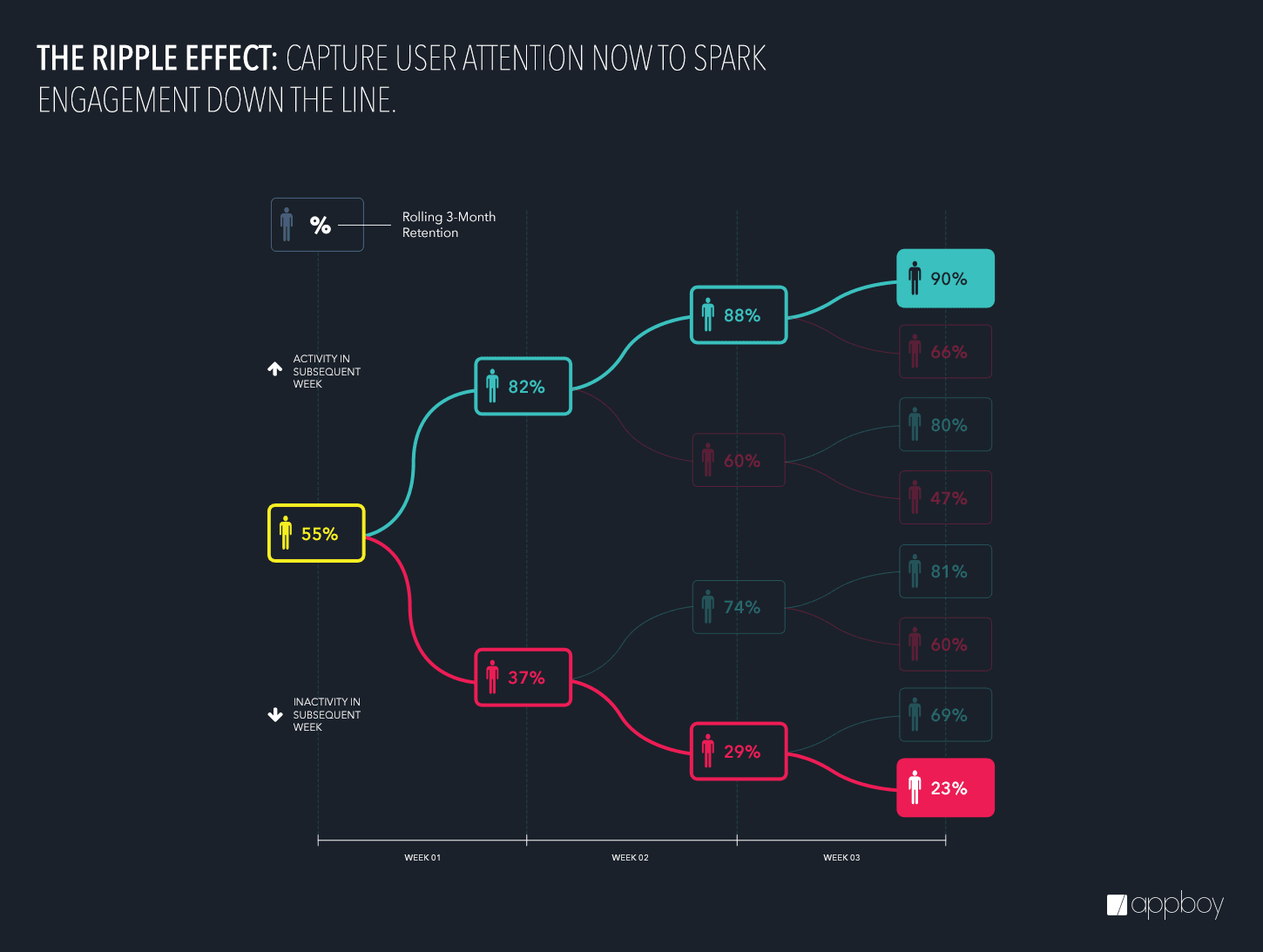
Takeaway
The first month that users spend with your app will be critical for long-term retention. Give your users reasons to return (think: promotions, deals, new content) and nudges to do so (think: emails or push notifications that send them back to the app).
Stat three
Sending just one onboarding-related push notification to newly acquired users during the first week after they’ve installed your app can increase retention by 71% over two months.
How can marketers achieve early, consistent engagement? The answer is simple: be proactive in your outreach. Users have finite time and attention spans—the more information and value you’re able to deliver upfront, the more likely you’ll be able to become part of your customers’ regular habits. Just one focused push notification can pique interest and spark engagement later during the customer lifecycle.
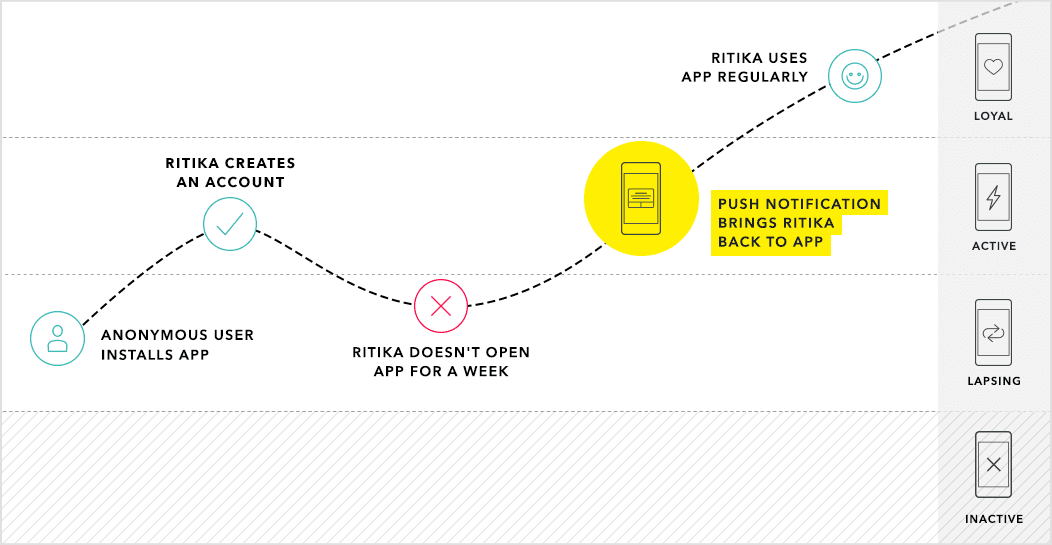
A push notification brings a user back to an app.
Takeaway
Proactive outreach creates long-term engagement ripple effects.
Stat four
Onboarding campaigns that include a push notification and a message via a different channel (email, in-app messaging, or News Feed) during that same first week within installing the app can increase customer retention by 130% over two months.
If you’re only sending your messages in one channel, you’ll miss out on segments of your users. Not everyone will be opted in to receive push notifications from you, or will be on your email list, or will happen to notice your outreach even if they are opted in to those channels. Multichannel approaches allow marketers to reach their users in whatever channel that user prefers. What’s more, you can create campaigns that use different channels to reinforce a message with multiple exposures, and leverage different tactics to tell a richer story.
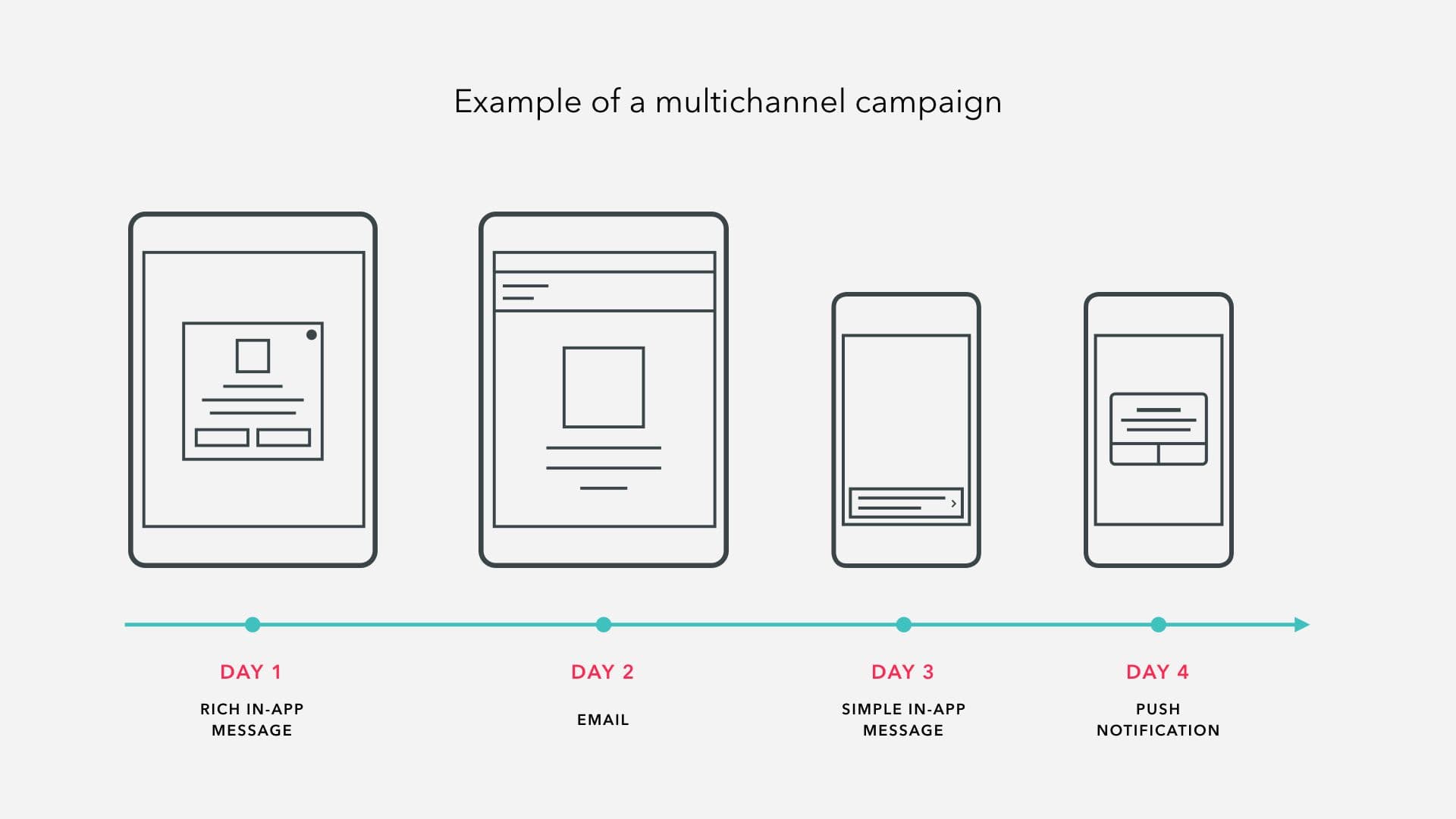
Takeaway
Reach and engage your audiences on their terms, in multiple channels.
Stat five
Personalized messages sent to app users increase conversions by 27% compared to generic messaging.
Want your push notifications, in-app messages, and emails to stand out from the others that your users are likely to be seeing? Show your audience that you care about their needs by sending specific, relevant, and tailored information. If you’re a marketer at an ecommerce company, you could show your user a product that he or she has been browsing.
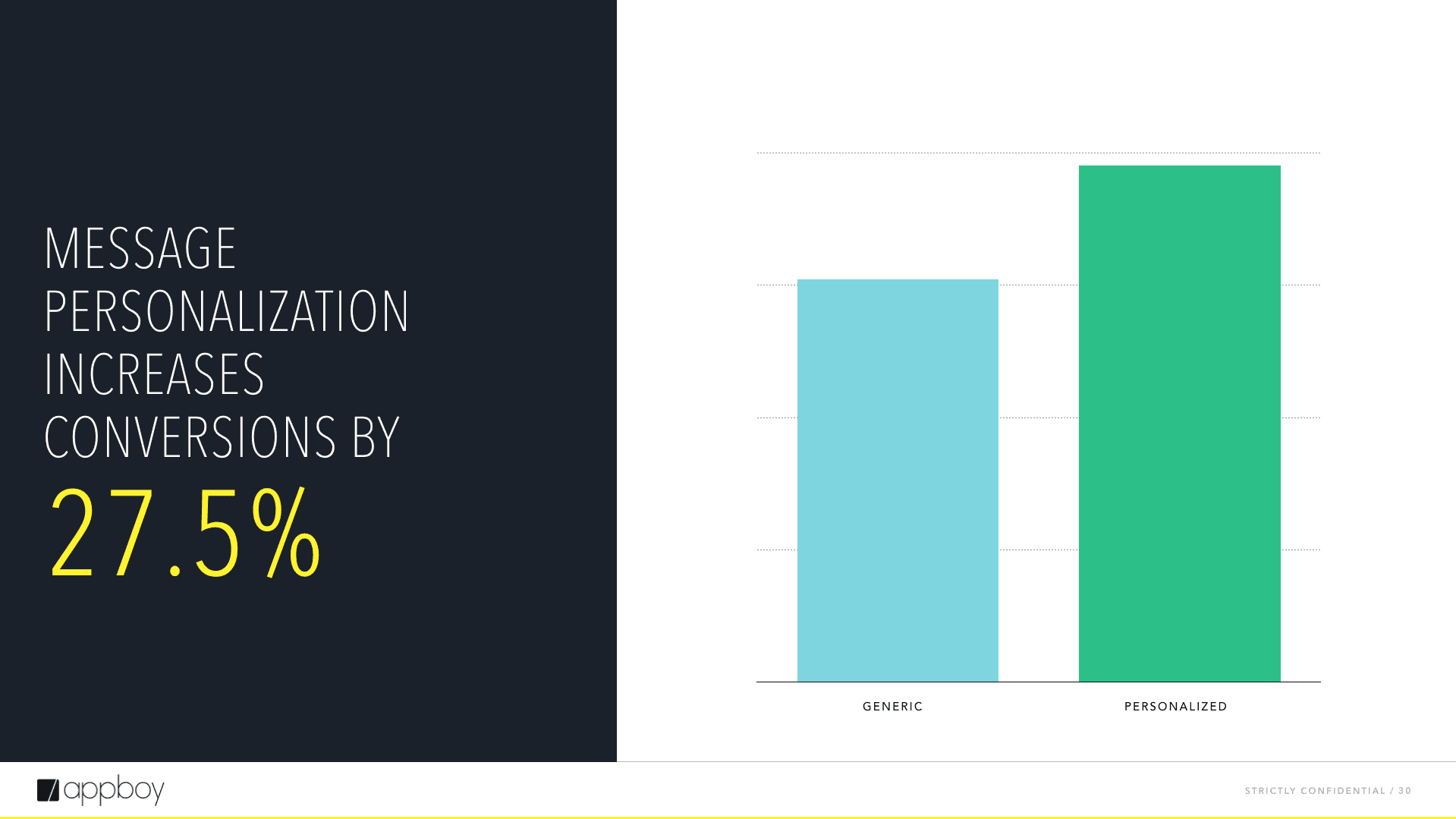
Takeaway
Tailor your messages to include customer names, items purchased, browsing history, or other attributes or tracked event data.
Stat six
Personalized message delivery times (using the customer’s personal engagement data) ups conversions by 25%, compared with scheduled campaigns that do not leverage information about individual preferences.
Should you send your push notifications in the morning when your users are likely to be en route to work, or should you wait until the evening when they’re unwinding at home? The answer will be different for every customer. The best way to arrive at a conclusion is to look at existing engagement data for each user and send messages when each person is most likely to engage. Appboy’s Intelligent Delivery is a tool that will do this for you.
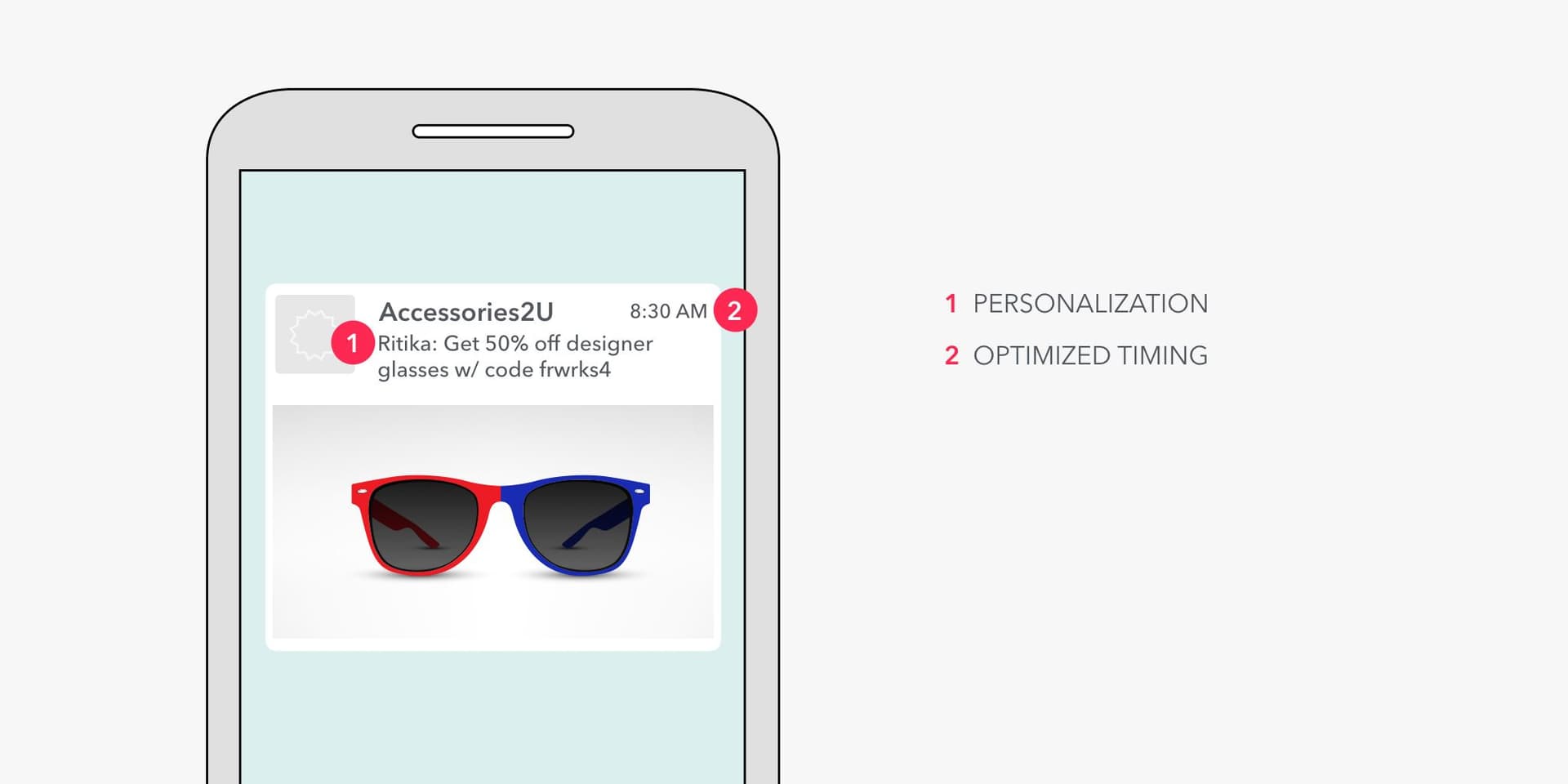
Takeaway
Historical data can help you improve the timing and precision of your messages.
Final thoughts
EPIX uses relevant images and timely messages to tell users about upcoming episodes. Be careful to target users at the beginning of their sessions, showing value to users before they have a chance to churn. Personalizing message content and delivery time, and planning across channels, are the keys to app engagement.
Be Absolutely Engaging.™
Sign up for regular updates from Braze.


